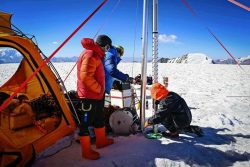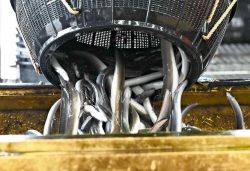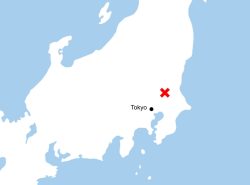
An image of the lunar surface taken by the SLIM lander just before sunset
17:25 JST, February 2, 2024
The Smart Lander for Investigating Moon, or SLIM, stopped its activities on the lunar surface and entered a dormant state around 9 a.m. on Wednesday, the Japan Aerospace Exploration Agency said Thursday. The lander’s solar panel cannot generate power now that night has fallen on the moon.
Along with the announcement, JAXA released new images of the lunar surface taken by SLIM just before the sun set.
A lunar night lasts about two Earth weeks. During the night, temperatures drop to around minus 170 C, while during the day, temperatures reach over 110 C. JAXA plans to turn the lander back on after mid-February when the lunar night ends, but it may not be possible to reactivate SLIM as the lander’s electronics could break in the harsh environment, such as from the temperature differences of over 200 degrees, according to JAXA.
The lunar craft landed the wrong way up in the early hours of Jan. 20, leaving its solar panel unable to take in sunlight. However, by Sunday night the angle with the sun had changed enough to allow the solar panel to generate power. The lander then used a special camera to successfully observe 13 locations on the moon’s surface, including a rock named after a dog breed. In the future, SLIM will analyze the composition of rocks and other materials, with the aim of achieving scientific insight into the moon’s origins.
“Seeing everyone pool their knowledge and work out measures, it was just like watching a movie,” said Kazuto Saiki, who developed SLIM’s camera and is the director of the Earth & Space Exploration Center at Ritsumeikan University. “We were able to make observations that are even better than what we expected,” he said.
"Science & Nature" POPULAR ARTICLE
-

Genome Study Reveals Milestone in History of Cat Domestication
-

Big Leap in Quest to Get to Bottom of Climate Ice Mystery
-

Security Camera Footage Vulnerable to Outside Access; Investigation Finds 3,000 Pieces Exposed Online
-

Paws on Parade: Nairobi’s Dogs Dazzle at ‘Pawchella’
-

Japanese Eels Escape New Regulation in Vote at CITES Meeting, Avoiding Higher Prices for Dealers and Diners
JN ACCESS RANKING
-

Keidanren Chairman Yoshinobu Tsutsui Visits Kashiwazaki-Kariwa Nuclear Power Plant; Inspects New Emergency Safety System
-

Imports of Rare Earths from China Facing Delays, May Be Caused by Deterioration of Japan-China Relations
-

University of Tokyo Professor Discusses Japanese Economic Security in Interview Ahead of Forum
-

Japan Pulls out of Vietnam Nuclear Project, Complicating Hanoi’s Power Plans
-

Govt Aims to Expand NISA Program Lineup, Abolish Age Restriction























